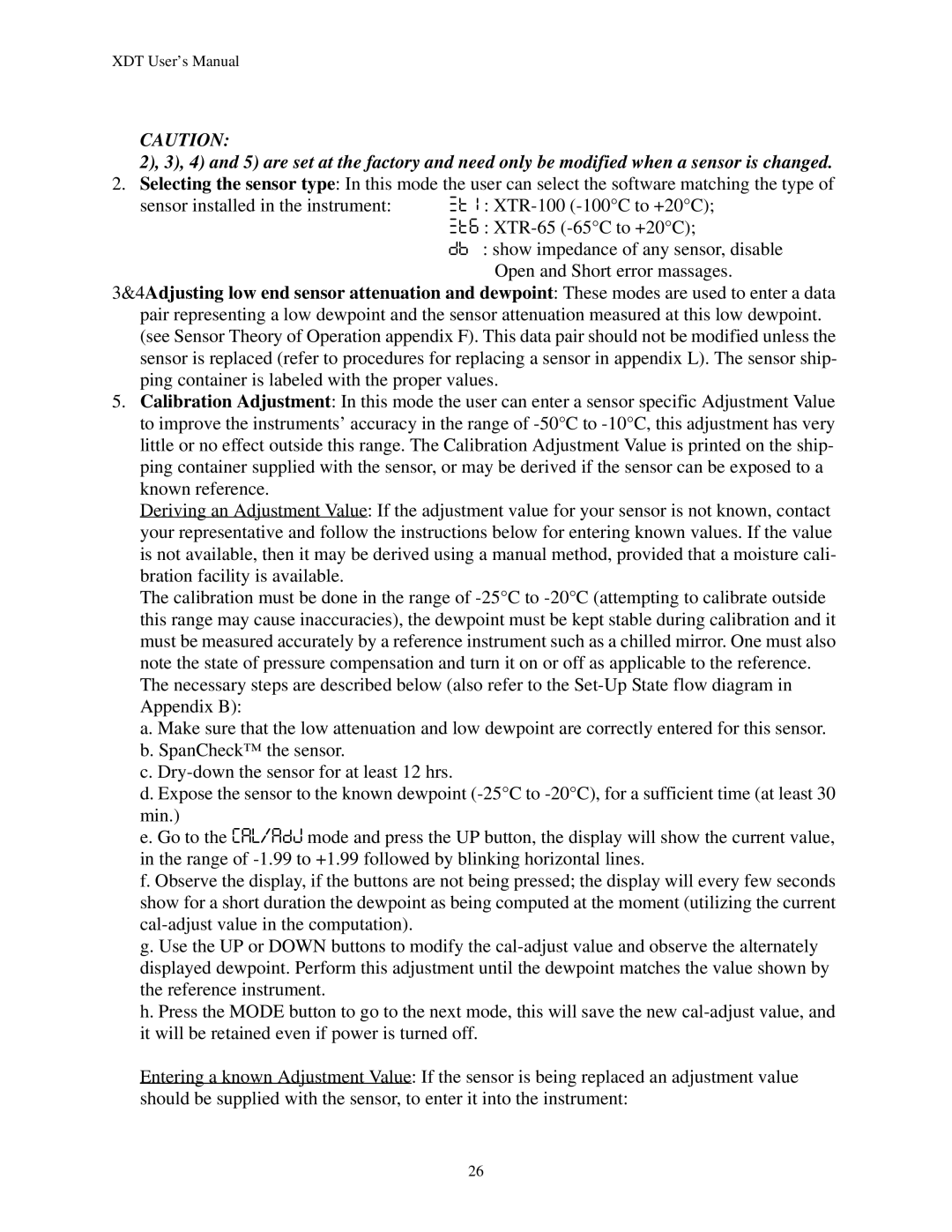XDT User’s Manual
CAUTION:
2), 3), 4) and 5) are set at the factory and need only be modified when a sensor is changed.
2. Selecting the sensor type: In this mode the user can select the software matching the type of
sensor installed in the instrument: XT1 :
DB : show impedance of any sensor, disable Open and Short error massages.
3&4Adjusting low end sensor attenuation and dewpoint: These modes are used to enter a data pair representing a low dewpoint and the sensor attenuation measured at this low dewpoint. (see Sensor Theory of Operation appendix F). This data pair should not be modified unless the sensor is replaced (refer to procedures for replacing a sensor in appendix L). The sensor ship- ping container is labeled with the proper values.
5.Calibration Adjustment: In this mode the user can enter a sensor specific Adjustment Value to improve the instruments’ accuracy in the range of
Deriving an Adjustment Value: If the adjustment value for your sensor is not known, contact your representative and follow the instructions below for entering known values. If the value is not available, then it may be derived using a manual method, provided that a moisture cali- bration facility is available.
The calibration must be done in the range of
a.Make sure that the low attenuation and low dewpoint are correctly entered for this sensor.
b.SpanCheck™ the sensor.
c.
d.Expose the sensor to the known dewpoint
e.Go to the CAL/ADJ mode and press the UP button, the display will show the current value, in the range of
f.Observe the display, if the buttons are not being pressed; the display will every few seconds show for a short duration the dewpoint as being computed at the moment (utilizing the current
g.Use the UP or DOWN buttons to modify the
h.Press the MODE button to go to the next mode, this will save the new
Entering a known Adjustment Value: If the sensor is being replaced an adjustment value should be supplied with the sensor, to enter it into the instrument:
26
